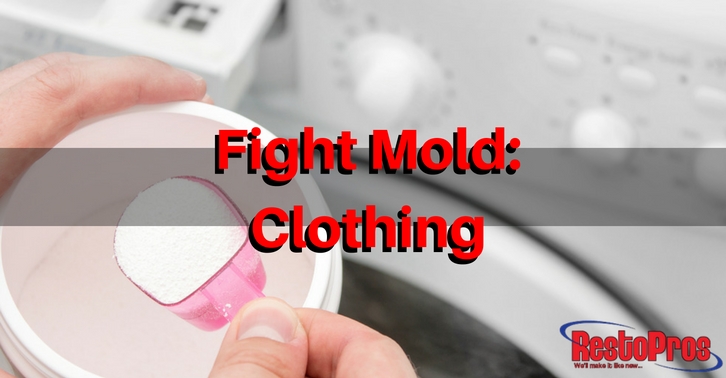 Mold survives and thrives when there’s humidity, warmth and food. Almost nowhere are these three things in as great a supply as in your laundry. Whether it’s because you left the hamper for too long after tossing in a wet towel, or simply forgot that you’d already run the washing machine, wet clothes are a breeding ground for mold. But you should never just reach for the bleach when you find mold on your clothes.
Mold survives and thrives when there’s humidity, warmth and food. Almost nowhere are these three things in as great a supply as in your laundry. Whether it’s because you left the hamper for too long after tossing in a wet towel, or simply forgot that you’d already run the washing machine, wet clothes are a breeding ground for mold. But you should never just reach for the bleach when you find mold on your clothes.
Mold grows easily on clothes because clothes are mostly food-ready surface area. Fabrics that are bundled up in storage or in a laundry hamper are a smorgasbord for rapid mold growth. The sooner you act, the more likely you are to be able to save the fabric involved. But bear in mind that most of the time, if the mold is advanced enough in its growth, there’s little that can be done to save mold-infested clothing (whether it’s a favorite shirt or those curtains you’ve had in the garage since your last move).
Cleaning
First, you should always wear a protective mask and gloves when cleaning mold. Mold spores are airborne and can act as soft-tissue (eye, nose, or lung) irritants and inflame allergies in sufficient quantities.
When cleaning up mold, remove as much of the surface mold as you can. Brush off loose or encrusted mold from the fabric. Be sure to take care of this step outside to prevent spreading mold in your home or through your ventilation system. Since you should already be outside, hang up or lay out the clothing in the sun. Ultraviolet light is devastating to organic life and will both kill and dry out mold.
When you’re ready to wash, pre-soak the fabric in cold water and wash with hot water and detergent. Do not wash moldy clothes with other clothes. Always finish by drying the clothing in the sun rather than an electric dryer.
If, after you’ve finished cleaning the fabric thoroughly, there is still a mold-stain present, then sponge at it with bleach diluted with water. Lemon juice and a salt solution will also work as a bleach substitute, and is less harsh than bleach in many cases.
Vinegar – the Miracle Cleaner
Vinegar is useful for cleaning in many circumstances. In fact, it’s often the best solution and is less likely to cause as much damage as harsher chemicals. If you’re having issues with mold, stains, and smells, run a pre-soaked load of laundry with warm water and ¾ of a cup of white vinegar. The vinegar will clear away the smell and, with enough washing, will kill and remove the mold as well. Just be sure to wash once again with detergent and then air-dry the clothing before returning it to the rack, drawer, or box it was stored in initially.
One final alternative is to use a mildicide to clean up the mold. Be cautious when choosing to use this method and always follow the listed instructions exactly. Because of the harsh chemicals involved, failing to follow directions can lead to injury or damaged fabrics and clothing.
Don’t forget to follow RestoPros on Facebook, Twitter, LinkedIn, and Google+ for new Updates, News, and Discounts!
